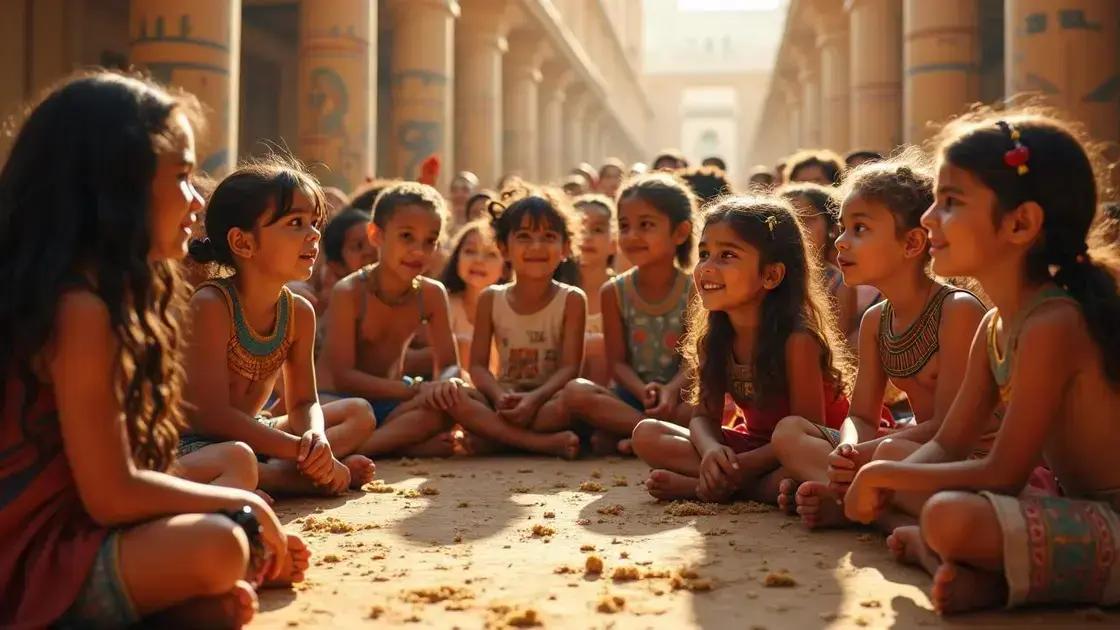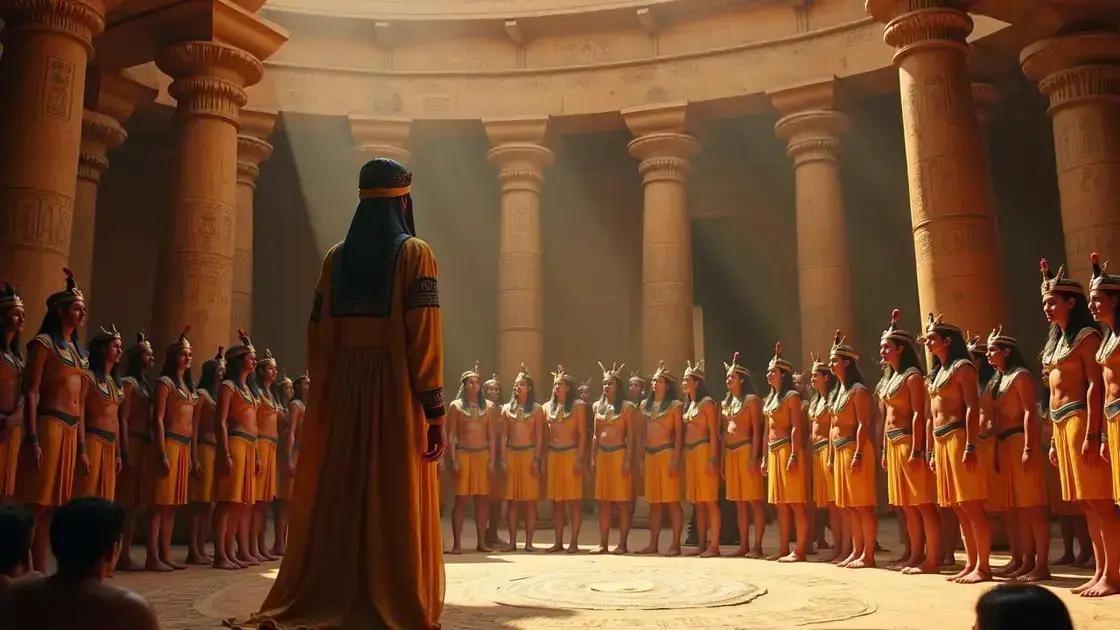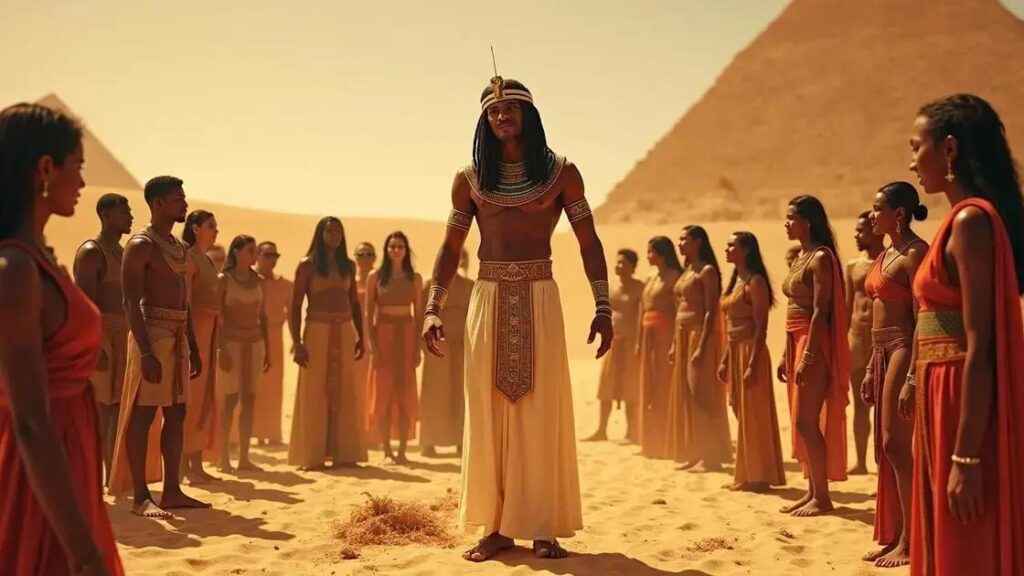The Trick of the Egyptian Pharaohs does not have formal age restrictions, but it is recommended for ages 10 and up due to its historical and cultural complexity. Understanding its context enriches the audience’s experience, showcasing the trick’s lasting cultural significance and influence on modern entertainment.
The Trick of the Egyptian Pharaohs has long fascinated audiences with its mystery and allure. But does the Trick of the Egyptian Pharaohs have age restrictions? This question is vital for parents, guardians, and educators. In this article, we will explore the historical context of this intriguing performance, examine age suitability, and discuss its cultural significance. Understanding these aspects will help you engage appropriately with this fascinating piece of history.
Understanding the Trick of the Egyptian Pharaohs

The Trick of the Egyptian Pharaohs is both a historical and cultural phenomenon. It has fascinated people for centuries due to its mystique and allure. But what is the essence of this trick? It often involves a performance that showcases illusions, tricks, and enchanting displays of skill.
What Is the Trick?
This trick can include elements such as sleight of hand or theatrics that seem to defy logic. Pharaohs and their court would put on grand displays to entertain as well as impress. These performances often mirrored the power and authority of the Pharaoh, adding to their god-like status among the people.
Historical Significance
Tracing back to ancient Egypt, the trick serves to connect us with the past. It reflects the rich tradition of storytelling and performance that has shaped Egyptian culture. Engaging with this magical trick brings history to life, illustrating the artistry and imagination of the time.
Enduring Popularity
Even today, the trick captivates audiences in modern performances, showing the lasting impact of ancient traditions on our culture. Its relevance in various forms—like theater and magic shows—demonstrates how these age-old skills have evolved while still paying homage to their origins. By understanding the trick, we gain insight into the values and beliefs of ancient Egypt.
Historical Context of the Trick

The historical context of the Trick of the Egyptian Pharaohs is rich and complex, dating back to ancient times. These performances were not just entertainment; they played a vital role in ceremonies and celebrations. Pharaohs and their courtiers used tricks to demonstrate their power and divine connection.
Religious Significance
Many tricks were often tied to religious beliefs and rituals. Ancient Egyptians believed that the Pharaoh was a god on earth. Thus, performances related to the Pharaoh often showcased supernatural abilities, enhancing their revered status. Audiences were captivated, as they saw their rulers perform feats that seemed beyond human capability.
Public Gatherings and Spectacles
Large public gatherings provided the perfect opportunity for these tricks to be displayed. Festivals would celebrate the Nile’s flooding or harvest seasons, turning into stages for the Pharaoh’s grand performances. These events were crucial for social unity, as they brought people together to witness the spectacle.
Influence on Future Performances
The legacy of these tricks continues well into modern times. Current entertainers and magicians draw inspiration from the illusions and storytelling techniques used in ancient Egypt. Understanding the historical roots of these performances allows us to see how they have evolved while still captivating audiences.
Age Suitability for the Trick

The age suitability for experiencing the Trick of the Egyptian Pharaohs is an important topic to consider. While the trick itself is entertaining, the complexity and themes of the performance may not be suitable for everyone. Understanding who can enjoy this trick helps ensure a positive experience for all audiences.
Recommended Age Range
Typically, ages 10 and up may find the trick engaging due to its historical and cultural elements. Younger children might enjoy the visual aspects but may not grasp the deeper meanings behind the performance. Therefore, it is helpful for parents to evaluate if their child can appreciate the underlying themes.
Cognitive Development
The ability to understand the context of historical performances grows with age. Children aged 10 and older generally have the cognitive skills to appreciate storytelling and might recognize the innovation behind the tricks. This age group also tends to be more curious, enhancing their overall experience.
Consideration of Themes
Some performances may touch on themes related to power, spirituality, and authority, which can be complex. Parents should consider whether these themes are appropriate for their children’s maturity level. Ultimately, parental discretion is recommended.
Feedback from Educators
Feedback from educators often suggests that discussing the historical context beforehand can enrich students’ understanding. This approach can help younger viewers engage with the performance meaningfully. Educational settings can tailor discussions suitable for different age groups.
Cultural Significance and Relevance

The cultural significance of the Trick of the Egyptian Pharaohs extends beyond mere entertainment. It serves as a connection between history, religion, and art. Ancient Egyptians valued performance as a way to reinforce their social structure and beliefs, making these tricks a crucial part of their culture.
Connection to Ancient Beliefs
In ancient Egyptian society, the Pharaoh was seen as a divine figure. The trick often symbolized the role of the Pharaoh in maintaining order and harmony. By entertaining the public with magic and illusions, they reinforced their god-like status. This connection to spirituality gave depth to performances, making them significant cultural events.
Preservation of Traditions
Today, the trick continues to remind people of Egypt’s rich heritage. As performers adopt these ancient techniques, they help preserve a unique cultural identity. The trick carries stories from generations past, ensuring that new audiences can learn about ancient practices and beliefs.
Influence on Modern Performance
The elements of the Trick of the Egyptian Pharaohs can also be seen in modern magic and theatrical performances. Artists today study these ancient techniques to improve their craft. This influence showcases how the past continues to shape the present.
Educational Value
Exploring the cultural significance of the trick offers great educational opportunities. Schools and communities can use these performances to teach about ancient civilizations, arts, and historical contexts. Engaging with this aspect of culture enriches knowledge and promotes a greater appreciation for the arts in general.
In Summary: The Trick of the Egyptian Pharaohs
The Trick of the Egyptian Pharaohs has captivated audiences for centuries, combining history, culture, and artistry. Understanding the trick provides insight into ancient beliefs and the significance it held in society. With age suitability considerations, it becomes essential for guardians to determine when children can engage with its deeper meanings.
The cultural relevance continues today, influencing modern performers while preserving age-old traditions. The compelling narratives rooted in historical context create an invaluable experience for those who encounter them. Overall, the Trick of the Egyptian Pharaohs remains an enduring spectacle that connects us to our shared human history.
FAQ – Frequently Asked Questions about the Trick of the Egyptian Pharaohs
What is the Trick of the Egyptian Pharaohs?
The Trick of the Egyptian Pharaohs refers to performances that featured magical illusions and captivating displays, used to entertain and astound audiences in ancient Egypt.
Are there age restrictions for experiencing the Trick?
While there are no strict age restrictions, it is recommended that children age 10 and up can better appreciate the historical and cultural significance of the trick.
Why is the historical context important?
Understanding the historical context allows audiences to grasp the deeper meanings and beliefs underlying the performance, enriching their experience.
What cultural significance does the trick hold?
The trick signifies the relationship between performance, religion, and social order in ancient Egypt, preserving important cultural practices and stories.
How has the trick influenced modern entertainment?
The techniques and storytelling from the Trick of the Egyptian Pharaohs continue to inspire modern magicians and performers, showcasing its lasting impact on the arts.
Can educational settings incorporate the trick into their curriculum?
Yes, educational settings can use the trick to teach about ancient civilizations, cultural heritage, and the arts, fostering a deeper understanding of history.












